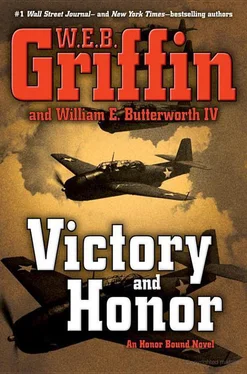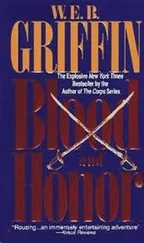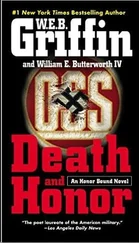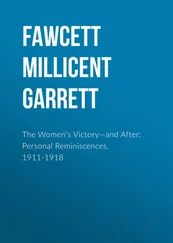“The I.G. Farben building,” von Wachtstein said.
He pointed the Constellation toward it.
Clete saw the altimeter was indicating fifteen hundred feet.
They dropped another five hundred feet before flashing over the huge building that stood unscathed in the rubble.
“You’re going to give our passengers heart failure,” Clete said. “Jesus, there’s an American flag on that building!”
“The Americans must have decided they were going to need it and did not bomb it,” von Wachtstein said matter-of-factly. “Now, let’s see if we can find the airport. You have the tower frequency?”
Von Wachtstein shoved the throttles forward and raised the nose of the Constellation as Clete dialed in the radio.
“Frankfurt Air Base, this is South American Airways Double Zero Four.”
There was no response after several calls.
“Take us to five thousand feet, Peter. l’ll try another frequency.”
“Going to five thousand.”
“Frankfurt, South American Double Zero Four.”
There was no answer on the new frequency.
“Clete, we have company,” von Wachtstein announced.
Clete looked past von Wachtstein and saw a twin-tailed Lockheed P-38 fighter.
It was so close that Frade could count seven swastikas—signifying seven kills—painted on the nose. Next to those was the picture, a drawing, the image of something else. It looked like an automobile with crossed lines going through it.
What the hell is that?
He shot down seven German airplanes and a convertible?
The pilot was holding up a piece of cardboard with numbers lettered on it with a grease pencil.
Clete tuned the radio to the frequency on the piece of cardboard.
He keyed the microphone: “Hello, there, Little Brother. You’re our welcoming committee?”
“Constellation aircraft, make an immediate, repeat, immediate one-hundred-eighty-degree turn to the right, maintaining altitude.”
“Why should we do that?”
“Because I said so, goddammit! Commence one-eighty now!”
“Do it, Peter,” Clete ordered.
Von Wachtstein cranked the yoke hard to the right.
“If one of our diplomats was taking a leak,” Clete said, “he just pissed all over the wall. Or himself.”
“Constellation, maintain course and altitude.”
“Little Brother, could you point us toward the Frankfurt Air Base? And give me the tower frequency?”
“You are on a course for Rhein-Main,” the P-38 pilot announced. “Do not deviate from this course.”
“And the tower frequency?”
The P-38 pilot gave it.
“Frankfurt Rhein-Main, this is South American Double Zero Four.”
“South American Double Zero Four, Rhein-Main. Be advised that there is a flight of four P-38 aircraft in your vicinity. They will guide you to the field. Begin descent to three thousand now.”
“South American Double Zero Four commencing descent to three thousand.”

There was a four-lane divided highway running close to the airport. Two lanes were empty, save for a few trucks and Jeeps. The other two were crowded as far south as Clete could see with lines of gray-uniformed soldiers.
“What the hell is that?” Clete asked.
“The Frankfurt/Heidelberg autobahn,” von Wachtstein said.
“I meant the soldiers.”
“Prisoners, I suppose, being marched to POW compounds.”
The runway was clear, but down its length were half a dozen obviously freshly and hurriedly repaired bomb craters. There were crashed or abandoned German aircraft all over the field.
Two U.S. Army bulldozers were pushing damaged aircraft away from the grassy area next to the runway, moving them into a pile.
As von Wachtstein completed the landing roll and then stopped, waiting for the promised FOLLOW ME vehicle to show up, he started pointing at various damaged aircraft and softly reported:
“That’s a Focke-Wulf Fw-190. Good fighter. I used to have a squadron of them—
“That’s a Messerschmitt Bf-109. I also used to have a squadron of them—
“The one with three engines, the transport, is a Junkers Ju-52. We called them ‘Tante Ju,’ for Auntie Ju. Not much like the Connie, is it?—
“My God, there’s a Messerschmitt Me-323 Gigant!”
Clete then said, “There’s the FOLLOW ME,” as a Jeep with black-and-white checkered flags flying from its backseat drove onto the runway in front of them.
It led the Ciudad de Rosario down taxiways, on either side of which were still more abandoned Luftwaffe aircraft—some of them looking completely intact and ready to fly—to what was left of a three-story, concrete-block building.
There was a wooden sign: WELCOME TO RHEIN-MAIN AIR BASE.
“And there’s our welcoming party,” Clete said.
“And look what somebody’s driving,” von Wachtstein said.
“I’ll be goddamned,” Clete said.
There were ten vehicles waiting for them. Two buses—German ones, obviously just requisitioned from the fallen enemy—two U.S. Army six-by-six trucks, two three-quarter-ton weapons carriers, and three Chevrolet staff cars. Plus, parked a short distance from them, a Horch convertible sedan identical to the one at Estancia San Pedro y San Pablo, except this one was entirely black.
Leaning against the door was a tall, startlingly handsome U.S. Army officer, a yellow scarf around his neck. His sharply creased trousers were tucked into a pair of highly shined boots of a type Clete had never seen before. He carried a 1911-A1 Colt .45 ACP semiautomatic pistol in a shoulder holster. The eagles of a full colonel were pinned to his epaulets and the triangular insignia of an armored division was sewn onto his sleeve.
“Why do I think he’s in charge?” von Wachtstein asked.
“Because he looks like General Patton?” Clete replied.
“ Mi coronel , I think this is one of the times you should wear your SAA uniform,” von Wachtstein said as a truck-mounted stairway was being backed up to the Connie’s passenger door.
There was another full bull colonel waiting for them when Clete, the last to debark, jumped to the ground from the bed of the stair truck. He saw that the last of their passengers was boarding one of the buses and that their luggage was being loaded onto one of the six-by-six trucks by soldiers.
The rest of the crew—all the pilots but Gonzalo Delgano—plus both stewards, and even Enrico Rodríguez, were being loaded onto one of the three-quarter-ton trucks.
The colonel waiting for them was short and pudgy. He wore glasses. His uniform, which had the flaming sword insignia of SHAEF on the sleeve, needed pressing.
Clete thought he and the other colonel, who was still leaning on the Horch, looked as if they were in different armies.
“Welcome to Germany,” the pudgy colonel said in flawless Spanish. “My name is Colonel Albert Stevens, and at the moment, I’m the senior officer of SHAEF Military Government in Frankfurt. SHAEF has just begun moving from France into the I.G. Farben building. I’ve been assigned to look after you. And you are, sir?”
“Gonzalo Delgano, mi coronel . I am chief pilot of SAA.”
The colonel offered his hand, then looked at Clete and von Wachtstein.
“I am Captain Frade,” Clete said, “and this is Captain von Wachtstein.”
“Von Wachtstein?” Colonel Stevens said. “That sounds pretty German.”
“There are a great many Germans in Argentina, Colonel,” Peter said.
“Well, you won’t be flying to Berlin today. The Russians are being difficult. We’re working on the problem, and by tomorrow I’m sure everything will be settled. So, what we’re going to do is take your passengers into Frankfurt, to the Park Hotel, which is near the railroad station. Because there’s just not room for everybody at the Park, we’re going to put your crew up here, in what used to be the Luftwaffe officers’ quarters. There’s a mess hall—not fancy, but adequate—and I think you’ll be comfortable.
Читать дальше













